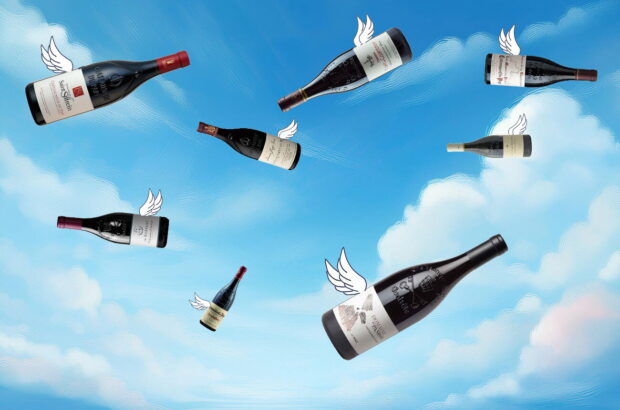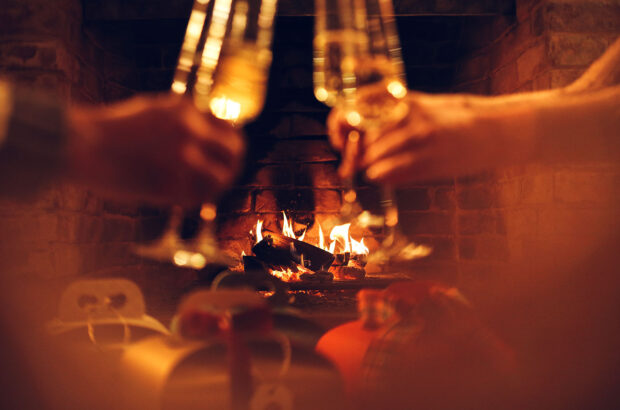As Bordeaux’s pricing woes continue, interest in Italy as a fine wine investment vehicle grows, with SuperTuscans and Barolos leading the way. Ella Lister analyses the hot prospects
Italy has been gaining traction in the fine wine market for several years, and now offers bona fide alternatives to more established investment wines from neighbouring France. As blue-chip Bordeaux has floundered since mid-2011, Italy has gradually filled its shoes, in both volume and value terms. Italy’s share of trade on the Liv-ex exchange has climbed steadily since 2010, culminating in a record 13.4% rise in September 2014, more than six times its average for the last eight years (see Chart 1, above).
This is thanks to increased interest in Italy’s wines from all quarters. Wine merchants are augmenting their Italian offerings, auction houses are dedicating more and more catalogue space to Italy, and even investment funds are making room in their portfolios for blue-chip Italian wines.
Italy’s modern-day status as a source of investment-grade wine began with what are now widely known as SuperTuscans, and these remain the key focus of investors. This category was born with the first commercial vintage of Sassicaia in 1968, closely followed by Tignanello and Solaia in the 1970s, then Ornellaia and Masseto in the 1980s. Many other wines belong to this group, or at least aspire to do so. ‘There are only seven or eight authentic SuperTuscans, wines that have really gained a great reputation and proved themselves year after year,’ argues Piero Antinori, who teamed up with Bonhams in October to auction several lots of Solaia, Tignanello and Guado al Tasso ex-château.
SuperTuscans have in common several characteristics which lend themselves to investment: the use of international grape varieties, a strong brand, and large volumes. Bordeaux blends (or at least the presence of some Cabernet alongside the indigenous Sangiovese in the case of Solaia and Tignanello, ‘to retain the character of Tuscany,’ says Antinori) make the wines accessible to Bordeaux lovers, and are also the reason they were denied entry to DOCG appellations and had to settle for lowlier IGT status. This worked in their favour, compelling them to develop a strong brand name in their own right. So successful was Sassicaia that it was granted its own appellation – Bolgheri Sassicaia DOC – in 1994. Like their Bordeaux counterparts, most SuperTuscans are produced in large quantities, providing liquidity and making them viable components of a wine investment portfolio.

In general, SuperTuscans have lived up to their label, tripling in price over the last decade (Chart 2, above). The Liv-ex SuperTuscan index has not seen the peaks and troughs of the Bordeaux first growths, but has climbed steadily, and despite flattening out over the last year, has proved a better investment over two, five and 10 years. It is unsurprising, then, that wine funds have started to pay attention. Wine Asset Managers’ funds now include 2-3% of Italian wine, and this might increase, though ‘not above 10%’, says WAM partner Miles Davis. SuperTuscans ‘trade a lot, they’re in the restaurants, and they drink early,’ he notes approvingly.
SuperTuscans have not shied away from this calling as investment-friendly brands; in fact, most embrace it. Masseto, for example, declared itself in a 2008 press release to be ‘a parachute for investors in times of crisis’, as it announced it was to be the first Italian wine to be sold on the Place de Bordeaux. The arrangement seems to work well: one year after release, the 2008 vintage had risen in price by 48%, the 2009 by 71%, and the 2010 by 90%. This is in contrast to the ambitious en primeur pricing in Bordeaux in recent years, where many crus have lost value since release. For SuperTuscans in general, ‘pricing is favourable even in heralded vintages and you therefore cannot cite a vintage today which trades below its release price,’ notes Steve Weids, Atlas Fine Wines’ head of sales.
Antinori believes Bordeaux crus suffered from being ‘too financially minded’, and becoming too reliant on China, where collectors bought Bordeaux ‘at any price’. He cautions that ‘when wine becomes solely speculative, it’s gone wrong’. He fears that for Italian wines too, ‘China could be a danger’. This fear seems unfounded for now, despite growing interest in Hong Kong. Rome-based auction house Gelardini & Romani started holding Italy-focused sales in the city in 2011. Co-CEO Raimondo Romani noted, after its sale in April 2014, that Italian wines performed very well – 97% sold – while uptake for French offerings was poor. Elsewhere, Luce della Vite, a SuperTuscan that orginated as a joint venture between the Frescobaldi and Mondavi families, saw exports to Asia increase almost threefold in value terms between 2009 and 2013.
Just as collectors of Bordeaux often move onto Burgundy, so lovers of Tuscan wine are discovering Piedmont. Unlike Tuscany with its IGT powerhouses, Piedmont has only DOCs and DOCGs. Barolo and Barbaresco are the DOCGs to watch from an investment perspective. Possessing none of the same investor-friendly characteristics of Bordeaux classed growths or SuperTuscans, these noble Piedmontese wines more closely resemble great Burgundies. Made in northerly climes, from a single grape variety – Nebbiolo to Burgundy’s Pinot Noir – in far smaller quantities, they are identified by place as opposed to brand name.
Piedmont is reminiscent of Burgundy two decades ago, with generational change and a move away from négociant-blended bottlings. The wines are already being identified as potentially savvy investments, in particular Barolo. One thing holding the appellation back is its inconsistent and often vague vineyard boundaries. Unlike in Burgundy, there is no official classification system for the different climats, only those which are better known, little known, or virtually unheard of. However, there is a greater understanding of village and vineyard site characteristics, and wines from renowned vineyards, made by star producers, are quickly adding to their core group of loyal followers.
The exceptionally well-received Barolo 2010 vintage has played no small part in igniting interest, with high scores from the critics and much ado from the merchants. Antonio Galloni called 2010 ‘one of the all-time great vintages for Italy’s most noble red.’ Richard Dawes Fine Wine saw ‘hot demand’. Collectors are thirsty for Barolo, and offers came thicker and faster than ever before in 2014. ‘We have certainly witnessed a significant increase in demand for Barolo this year, with clients now looking back at other notable vintages,’ says Weids. On 15 November, Sotheby’s offered its most significant collection of Italian wine ever, featuring growers such as Gaja, Giacosa, Aldo Conterno and Giacomo Conterno. The hype around 2010 is likely to drive up prices in general, and investment minded collectors could do worse than to add some of the bigger names to their cellars (see Chart 3, below).

Over the decade to September 2014, a selection of three benchmark Piedmont wines – Luciano Sandrone’s Barolo Le Vigne, Gaja’s Barbaresco and also Gaja’s Langhe Sorì Tildìn (declassified to Langhe DOC to allow for 5% of Barbera alongside the Nebbiolo) – have appreciated on average 43%, compared to 142% for the five wines included in Liv-ex’s SuperTuscan index. Only Solaia has trailed behind. This could change if Piedmont begins to attract the fanatical attention showered on some rare Burgundies. However, Piedmont has something else in common with Burgundy: its small production volumes make it less liquid than its southerly counterpart, and therefore less practical for professional investors. ‘We haven’t ruled out Piedmont,’ says Davis in relation to his fund portfolios. ‘But it’s a bit tricky in the way that Burgundy is.’ Weids echoes this caution, saying, ‘Paper values may flatter and it may not be as easy to place the wine when it comes to eventual sale.
Written by Ella Lister







